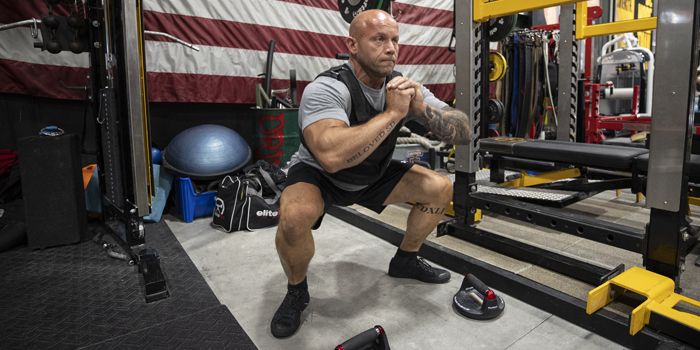
Daniel Kahneman’s book Thinking Fast and Slow (31) talks about how we experience things with what he calls the remembering self and the experiential self.
The remembering self is relatively stable and permanent and can be far removed from the actual experience. This remembering self has the power to dictate the perception of what your memories tell you, and this perception can either shift your memory to a more positive one or a more negative one.
When More Pain is Preferred to Less
In a study conducted by Kahneman et al. (32), they took 32 male students and put them through two different experiments to see which experiment created more discomfort.
In the first trial, the subjects submerged their hands in water that was 14 degrees Celsius for 60 seconds. After a washout period, the same subjects submerged their hands in the same 14 degrees Celsius water for 60 seconds. They then kept their hands in the water for an additional 30 seconds while the water temperature rose slightly.
They found that discomfort was almost identical for both groups during the first 60 seconds and the temperature mean increase went from 14.1 to 15.2 degrees Celsius for the last 30 seconds of the longer duration (so not a huge difference but noticeable).
RECENT: What Makes Athletes Great
Those extra 30 seconds, a slight change in temperature made a pronounced drop in discomfort. When asked if they would do a third trial, 22 of the 32 would repeat the longer trial, therefore choosing to be in more pain longer because the memory of that pain was reduced due to the slight increase in temperature. How the experiment ended played a far bigger role in the perception of the pain.
Mindset Matters
Another great study done by Harvard conducted by Crum & Langer, 2007 (33) looked at the placebo effect and mindset. The study took 84 female room attendants and divided them into two groups. One group was the control, and the other group was told that their work is good exercise and satisfies the Surgeon General’s recommendations for an active lifestyle.
After four weeks of the intervention, the informed group perceived themselves to be getting significantly more exercise. With no change in behavior, no diet adjustments, and no extra exercise outside of work, they had a decrease in weight, blood pressure, body fat, waist-to-hip ratio, and body mass index as compared with the control group.
These two studies show what a pivotal role perception can play in one’s ability to progress from a psychological and a physiological level. Being able to perceive exercise as being less difficult can be a great way to get through an incredibly tough session. It can also allow you to push a little bit harder through the session and help you recover from session to session.
Suppose you end a very tough workout with some type of cool-down protocol that allows you to remember the session as not being as difficult. In that case, you will not only recover faster due to getting into a parasympathetic state, but you will also look forward to the next session, which is one of the drivers of fatigue that relates more to mental fatigue, which induces physical fatigue. Stress is another one that is helped by the perception of it and whether or not the stress is self-induced or brought about by outside factors.
Researcher Samuele Marcora has spent a lot of time researching the idea that perception of effort is the primary factor determining how long highly motivated individuals can sustain high-intensity aerobic exercise. He has conducted a handful of studies and developed a nice biopsychosocial model of fatigue that relies heavily on the motivational and cognitive elements of exercise as the biggest factors of acute and chronic fatigue.
This goes against the physiological construct of fatigue, but I find it as more of another cog in the fatigue wheel. We must take in the emotional/cognitive side of fatigue and its physical/physiological side.
The Cardinal Exercise Stopper
In a recent study by Marcora titled The Cardinal Exercise Stopper—Muscle Fatigue, Muscle Pain, or Perception of Effort (34), he conducted two different studies on amateur and professional athletes ranging in sports from cycling to soccer, but all consisted of endurance-based sports. He took these subjects through a Time to Exhaustion (TTE) test in each study using a cycle ergometer and wanted to look at what the underlying mechanism was that made them quit.
In the first study, they looked at the idea of locomotor fatigue as the cause of termination of the TTE test. They looked at the final watts output once the athlete hit exhaustion and compared it to their maximum voluntary cycling power (MVCP) right after the subject hit exhaustion.
If muscular fatigue were the cause of termination, the watts output at the end of TTE would be higher than the MVCP, but that was not the case. The MVCP was significantly higher, meaning their muscles still had a lot of juice left in the tank. In Study 2, they looked at muscle pain as the main cause of termination. They used a pain unpleasantness scale of 1-10 on the subjects right after the TTE, and they compared that with a cold pressor test, a common test to create pain in a subject.
When using the cold pressor test, subjects, on average, rated it at a 9.7 out of time, and subjects rated, on average, the TTE test as a 5. This leads to the idea that pain is not the reason for termination. The last thing they looked at was the perception of effort as the reason for termination using the Borg scale of Rate of Perceived Exertion (RPE), which is a scale of 6-20. They found in Study 1, the average RPE at exhaustion was a 19.8 and in Study 2 it was a 19.6. They also found a linear correlation between the time on the cycle ergometer and RPE, the more time they spent riding the higher the RPE climbed. They concluded that termination of exercise was a conscious decision where the perception of effort plays a key role. They also stated that they did not want to discredit pain and muscle fatigue as a contributory factor, but they are not the singular factor. A more holistic approach should be considered when thinking about why people stop.
Marcora did not stop there. He set out on a series of studies to continue to build this idea of the brain’s role in the perception of effort, along with ways to manipulate it for better performance.
Non-Conscious Visual Cues
In 2014, he embarked on another fascinating study with the help of Blanchfield and Hardy that looked at non-conscious visual cues related to affect and action altering perception of effort and endurance performance (69). They conducted two experiments within this study.
The first experiment looked at visual cues to improve endurance performance. They took 13 healthy and recreationally trained subjects and put them through two Time to Exhaustion (TTE) trials on a cycle ergometer. In one TTE trial, the subjects saw a happy face, and the other saw a sad one on the screen. The subjects subliminally primed with happy faces cycled for 178 seconds more than the participants who saw the sad faces. RPE was also significantly lower in the happy faces compared to the sad ones. The results suggest that non-conscious visual cues related to affect can alter the perception of effort and enhance performance in endurance exercise. Perception of effort is the conscious sensation of how hard, heavy, and strenuous a physical task is, whilst potential motivation is the highest effort a person is willing to exert to succeed in a task.
In the second experiment, they took one subject who was an experienced endurance athlete with more than four years of regional competition under his belt. In this study, they took the subject through 12 TTE trials and looked at the use of subliminal word primes to see if they would positively or negatively impact the trials. The action-primed words used were action, go, lively, and energy. The inaction words consisted of stop, toil, sleep, and tired. The participant cycled for 399 seconds longer when subliminally primed with action words. RPE was also significantly lower when using the prime action words than the inaction words. This study shows us that our words and what we see can profoundly affect our performance.
These studies give you some tools to use before your next training session or race to increase performance.
References
(31) Kahneman, D. (2011). Thinking, fast and slow. Farrar, Straus and Giroux.
(32) Kahneman, D., Fredrickson, B. L., Schreiber, C. A., & Redelmeier, D. A. (1993). When more pain is preferred to less: Adding a better end. Psychological Science, 4(6), 401-405. https://doi.org/10.1111/j.1467-9280.1993.tb00589.x
(33) Crum, A. J., & Langer, E. J. (2007). Mindset matters. Psychological Science, 18(2), 165-171. https://doi.org/10.1111/j.1467-9280.2007.01867.x
(34) Staiano, W., Bosio, A., De Morree, H. M., Rampinini, E., & Marcora, S. (2018). The cardinal exercise stopper: Muscle fatigue, muscle pain or perception of effort? Progress in Brain Research, 175-200. https://doi.org/10.1016/bs.pbr.2018.09.012
(66) Gandevia SC. Spinal and supraspinal factors in human muscle fatigue. Physiol Rev. 2001 Oct;81(4):1725-89. doi: 10.1152/physrev.2001.81.4.1725. PMID: 11581501.
(67) Marcora, S. M., & Staiano, W. (2010). The limit to exercise tolerance in humans: Mind over muscle? European Journal of Applied Physiology, 109(4), 763-770. https://doi.org/10.1007/s00421-010-1418-6
Tony Montgomery lives in Stillwater, Oklahoma. He studied exercise science at Florida Atlantic University, received his Master's of Science in Exercise Science at the University of South Florida, and is currently pursuing his Doctorate of Philosophy in Health, Leisure, and Human Performance at Oklahoma State University. He owns Team Phoenix Performance (an online coaching company), Subject Zero Supplements, and Coaches Corner University (an online education platform). Tony competed in strongman and powerlifting, where he hit a 2,001-pound total in the 242-pound class with wraps. Now he competes in Brazilian Jiu Jitsu and endurance events. He also served four years in the United States Marine Corps with 2nd Recon Bn.










